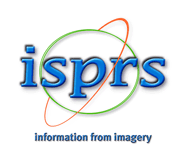A Machine Learning-Based Method for Automated Land Use Data Generation from Satellite Imagery
Keywords: Land use data, Automated classification, Satellite imagery, Machine learning, Remote sensing
Abstract. Land use data, provided as open data by Japan’s National Land Numerical Information (NLNI), has long served as a fundamental resource across various fields such as urban planning and disaster prevention. The dataset divides the entire country into 100-meter square mesh units and classifies each unit according to its land use purpose, enabling spatially detailed understanding of land use patterns. However, maintaining this dataset requires significant time and cost, as human operators visually interpret land use for each mesh by overlaying satellite imagery with geospatial data. As a result, it is difficult to update the dataset rapidly on a nationwide scale, leading to insufficient responsiveness to changes in land use. To address this issue, this study developed a method to automate land use classification using satellite imagery and improve the efficiency of land use data maintenance. Specifically, the method utilizes high-resolution and high-frequency observation data from Sentinel-2 and employs machine learning to automatically classify land use into four categories: Residential land, Other inhabitable land, Water bodies, and Forests and wastelands. As a result, the method enables high-accuracy generation of land use data and achieves significantly improved efficiency compared to conventional approaches. Furthermore, by integrating time-series satellite imagery, the method shows potential for flexibly responding to changes in land use.





